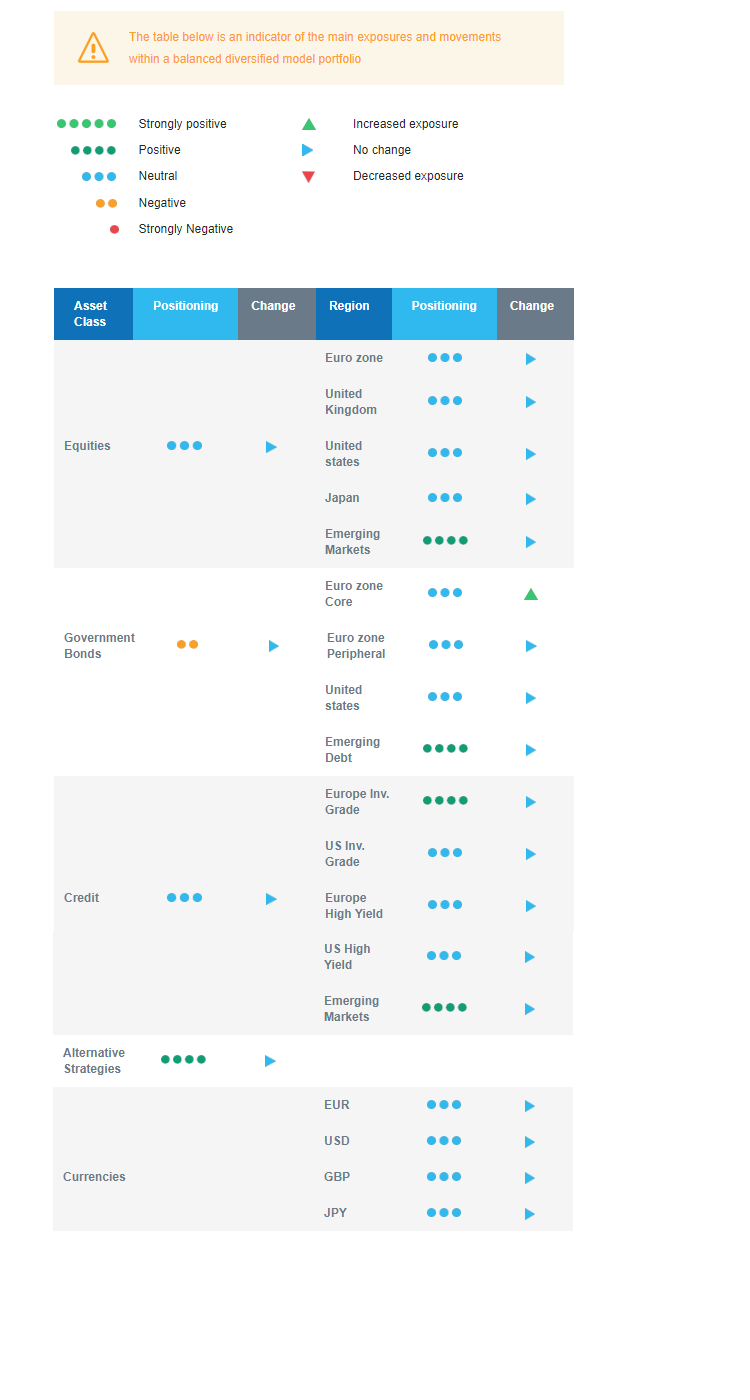Last week in a nutshell
- In the US, Fed chair Jerome Powell’s expressed a hawkish tilt while the economy created an additional 311K jobs in February.
- The rising funding cost pressure hit a US bank in the Silicon Valley which triggered a more widespread risk-off move in global markets.
- In China, President Xi gained a third term and was reappointed as chairman of the Central Military Commission.
- In Japan, Bank of Japan governor Haruhiko Kuroda, held his last policy meeting. He will be replaced by Kazuo Ueda.
What’s next?
- The ECB will publish its new set of economic forecasts, likely raising rates by 50bp and holding the usual subsequent press conference. Investors will look for insights on the monetary policy path beyond March.
- In the US, inflation, housing, and sentiment data will be released covering consumer and producer inflation, housing starts and the University of Michigan survey, just in time for the Fed's March 22nd meeting.
- The Bank of Japan will release the minutes from the last meeting. Together with People’s Bank of China, the BoJ is the only one who has bucked the global tightening trend so far.
- Whether the households’ accumulated savings during the Zero-Covid strategy are being spent will be confirmed by Chinese retail sales and industrial production, both expected to be growing.
Investment convictions
Core scenario
- Our current economic scenario is based on a soft landing of the US economy in 2023. We expect a consolidation phase on financial markets in the short-term after a strong start to the year as the robust outlook is increasingly reflected in markets.
- Credit is a strong conviction for the start of 2023 since the carry that was reconstituted by the rise in yields in 2022 looks attractive. We are overweight Credit, including Emerging market debt.
- We see equity markets moving within a broad range: limited to the upside by the actions of central banks, which will ensure that financial conditions do not ease too quickly if the economy is holding up well and supported by a faster monetary policy pivot if the economy is hit too hard.
- We expect emerging markets to outperform as valuation is relatively more attractive while Asia keeps superior long-term growth prospects vs. developed markets, given that China’s re-opening is very quick.
- Euro zone activity was shielded by a fortuitous combination of a mild winter, a reduction in consumption thanks to targeted measures, increased gas storage and falling energy prices. Sentiment, labour market and consumption are holding up while inflationary pressures resurfaced. With the re-opening of China, Europe should likely resume its export growth.
- In this environment, we expect Alternative investments to perform well on a medium-term horizon.
Risks
- Overall, inflation declines and a rise in growth at some point in 2023 is limiting the market downside. But we know that the central banks anti-inflation stance is also capping the upside potential for risky assets. We note a more hawkish tone in recent weeks, which has pushed yields higher and thereby increased financial vulnerability.
- As central banks become more data dependent, and, for the time being, the economy is surprising on the upside, markets are pricing in a more restrictive monetary policy on both sides of the Atlantic.
- The dramatic drop in gas prices makes a European recession scenario less likely. However, another risky scenario is now emerging as core inflation is not showing sufficient signs of slowing down and could lead the ECB to tighten its monetary policy further.
- Among the upside risks, the Chinese re-opening is good news for the domestic and global growth as long as there is no global inflation spill over via a resurgence of commodity prices in the context of constrained supply.
Cross asset strategy
- Our multi-asset strategy is currently neutral as signs are pointing towards a consolidation. With a less attractive risk/reward on the US equity market, we keep a neutral stance on equities.
- We are neutral equities vs bonds. We have convictions in specific assets.
- Within regional equity preferences, we believe in the Emerging markets region, as valuation is relatively attractive and there is room for a catch-up vs. developed markets.
- In the current environment, we prefer defensive sectors, such as Healthcare and Consumer Staples while a pause in the Tech sector appears warranted.
- The Health Care sector is expected to provide some stability: no negative impact from the war in Ukraine, defensive qualities, low economic dependence, innovation, and attractive valuations.
- In addition, the current context continues to favour companies with pricing power, which we find in the Consumer Staples segment.
- In bonds, most asset classes have an attractive carry. European investment grade credit is one of our strongest convictions. We also have exposure to emerging debt and to global high yield debt.
- We have currently a neutral duration positioning.
- We have exposure to some commodities, including gold and commodity-related currencies, including the Canadian dollar.
- In our long-term thematics and trends allocation: We favour investment themes linked to the energy transition and keep Technology in our long-term convictions. We expect Automation and Robotisation to recover in 2023, and a growing interest in Climate and Circular Economy-linked sectors (such as Industrials and Technology).
Our Positioning
Our current positioning is neutral equities and neutral on bond duration, with a preference for Emerging markets. On the fixed income side, we have a constructive view on Investment Grade credit. In the context of robust growth and the reopening in China, we remain allocated to some commodities.

